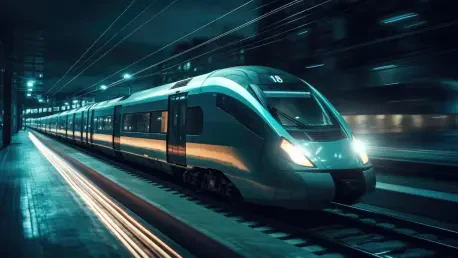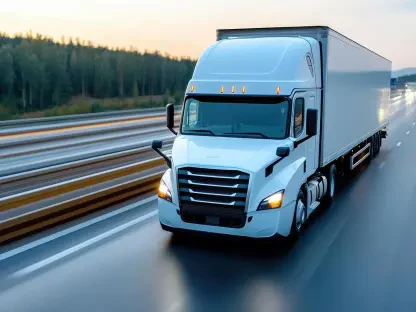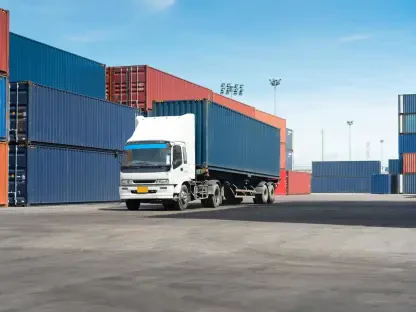As a leading voice in transportation policy and infrastructure development, Rohit Laila brings a wealth of expertise to the table with decades of experience in the logistics industry, spanning supply chain and delivery. His passion for technology and innovation in the sector makes him the perfect person to dive into the European Commission’s ambitious new plan to revolutionize high-speed rail across the EU. In this interview, we explore the overarching goals of this initiative, the transformative impact on travel times and connectivity, the strategic pillars guiding its implementation, and the role of innovation in shaping the future of rail travel in Europe.
Can you walk us through the core objectives of the European Commission’s new high-speed rail plan and what it means for passengers and the broader EU?
Absolutely. The European Commission’s plan is a game-changer aimed at accelerating the development of high-speed rail across the EU. For passengers, it promises drastically reduced travel times, making rail a more attractive option compared to air or road travel. Think of it as shrinking the map of Europe—journeys that used to take hours will now be cut in half on many routes. For the EU as a whole, it’s about fostering unity, boosting economic growth through better connectivity, and leading the charge in sustainable transport. This initiative builds on the existing trans-European transport network, or TEN-T, to create a seamless, efficient, and eco-friendly backbone for travel across the continent.
How does this plan specifically aim to slash travel times, and can you highlight some key routes that will benefit?
The plan focuses on upgrading infrastructure and optimizing routes to achieve significant time savings. For instance, the journey from Berlin to Copenhagen, which currently takes seven hours, is targeted to drop to just four hours by 2030. Another exciting example is the Sofia to Athens route, which could be reduced to six hours by 2035. These aren’t just numbers—they represent a shift in how people experience travel, making cross-border trips far more convenient and competitive with other modes of transport. It’s about making rail the go-to choice for both business and leisure travelers.
What’s the long-term vision for the completion of this high-speed rail network across the EU?
The big picture is to have a fully integrated high-speed rail network operational by 2040. This isn’t just about faster trains on existing lines; it’s a comprehensive overhaul that prioritizes connecting regions that have historically lacked strong rail links. Think of areas like the Baltic countries or ambitious cross-continental routes such as Paris to Lisbon via Madrid. The goal is to ensure that no corner of the EU is left behind, creating a truly interconnected Europe where distance isn’t a barrier to opportunity or collaboration.
One of the plan’s pillars focuses on investment and harmonization. How will the EU address cross-border bottlenecks to improve the flow of rail travel?
Cross-border bottlenecks have long been a headache for rail travel in Europe, often due to differing national standards or infrastructure gaps. The Commission is tackling this head-on by setting binding timelines—expected to be finalized by 2027—to eliminate these obstacles. They’re also exploring options for higher speeds, even beyond 250 km/h where it makes economic sense. The idea is to standardize and streamline operations so that trains can glide across borders as easily as they do within a single country, making the passenger experience seamless and reliable.
Can you explain the concept of the High-Speed Rail Deal and its role in funding this massive project?
The High-Speed Rail Deal is a cornerstone of the investment strategy. It’s essentially a strategic dialogue involving EU member states, industry leaders, and financial stakeholders to coordinate funding and attract private investment. The goal is to strengthen the EU’s financing ecosystem for these projects, ensuring that the TEN-T network is completed by 2040. By aligning public and private resources, the Deal aims to bridge funding gaps and accelerate construction, making sure that financial constraints don’t slow down this critical infrastructure push.
Another pillar of the plan emphasizes creating a competitive framework. How will initiatives like the second-hand rolling stock market impact the industry?
This is a smart move to maximize resources and lower costs. Starting in 2027, the plan bans the scrapping of functional and safe rolling stock and establishes a second-hand market for resale and operation. This not only reduces waste but also makes it more affordable for operators to maintain and expand their fleets. It levels the playing field, especially for smaller or newer companies, by giving them access to equipment that might otherwise be out of reach, ultimately fostering competition and innovation in the sector.
What improvements are planned for cross-border ticketing and booking systems to simplify travel for passengers?
By 2026, the Commission plans to roll out a proposal to overhaul cross-border ticketing and booking systems. Right now, buying a ticket for a journey spanning multiple countries can be a hassle, with different platforms, languages, and pricing structures. The goal here is to create a unified, user-friendly system that simplifies the process—think of it as a one-stop shop for planning and purchasing tickets. This will make rail travel more accessible and appealing, especially for international trips, by removing the friction that often discourages passengers.
How does the plan encourage innovation in the European rail sector, particularly with next-generation high-speed trains?
Innovation is at the heart of this plan, and a key focus is a 2026 research call under Europe’s Rail program to develop next-generation high-speed rolling stock. The aim is to overcome technical barriers that currently prevent trains from operating seamlessly across different national systems. This could mean advancements in design, interoperability, and efficiency, paving the way for trains that are faster, safer, and more adaptable. It’s about future-proofing the rail network to meet the demands of tomorrow’s travelers.
Looking ahead, what’s your forecast for the future of high-speed rail in Europe based on this ambitious plan?
I’m incredibly optimistic about the trajectory of high-speed rail in Europe. If executed well, this plan could position the EU as a global leader in sustainable transportation. By 2040, we could see a network that not only transforms how people move but also reshapes economies, reduces carbon footprints, and strengthens regional ties. The focus on innovation and competition suggests a dynamic market where operators continuously improve services. My forecast is that rail will become the backbone of European travel, outpacing other modes in convenience and environmental impact, provided the funding and political will remain strong.









